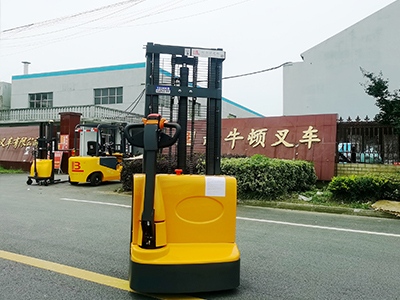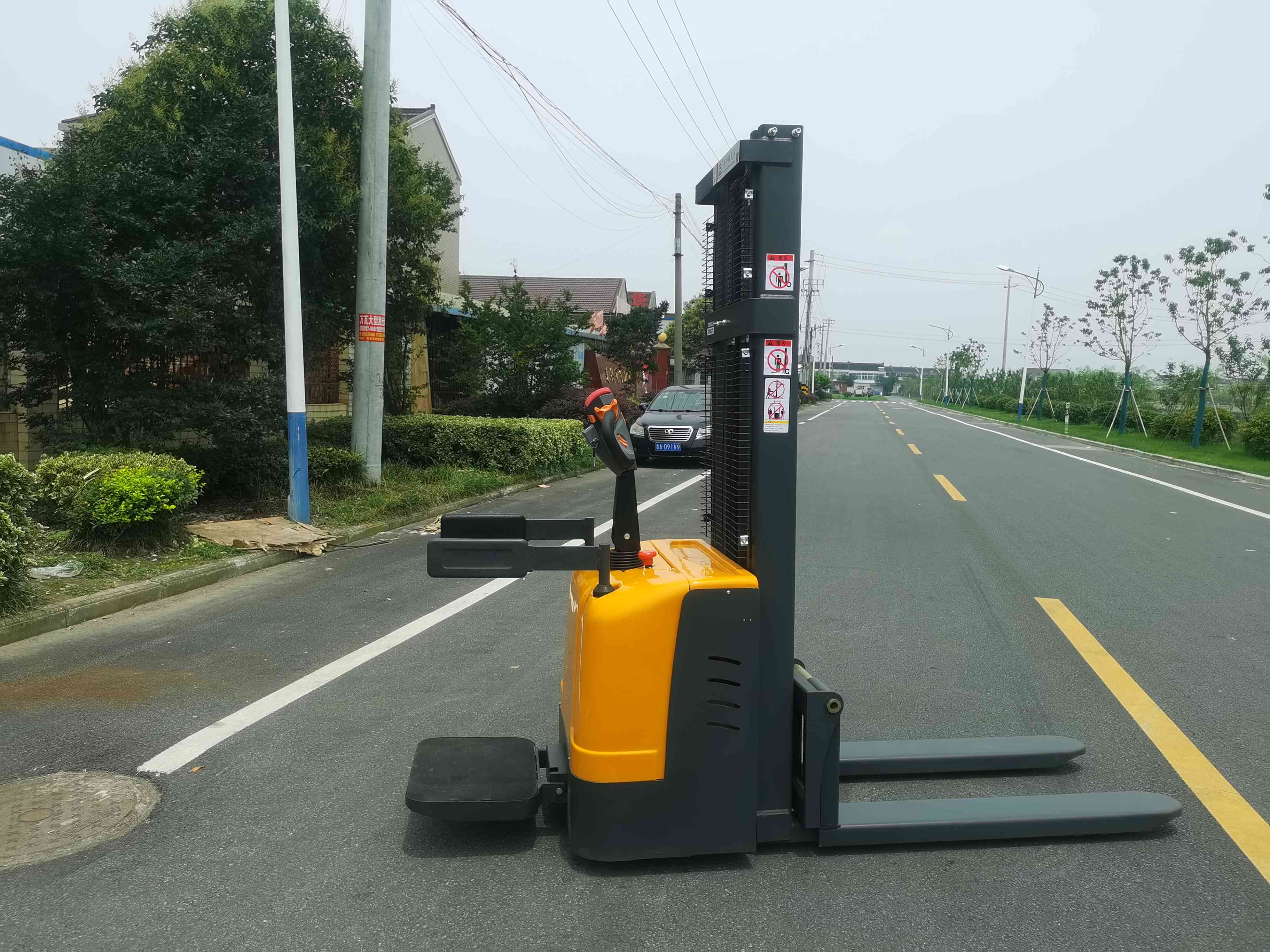Why does the electric pallet stacker use a hydraulic transmission system?
Anyone who knows about electric pallet stacker knows that they use a hydraulic transmission system. According to the different properties of transmission work, commonly used traditional systems are divided into mechanical transmission, electrical transmission, gas transmission, and liquid transmission. Among them, liquid transmission can also be divided into hydraulic transmission, liquid viscous transmission, and hydraulic transmission. Why did the electric pallet manufacturer choose hydraulic transmission in so many transmission modes? Let's talk about the advantages and disadvantages of hydraulic transmission.

The reason why the hydraulic transmission system is selected for the electric pallet stacker is that the hydraulic transmission has the following advantages over other types of transmission: First, under the same power output conditions, the hydraulic device has small size, compact structure, small inertia, and sensitive response. For example, the volume of a hydraulic pump (or hydraulic motor) is only 13% to 20% of that of a motor of the same power, and the weight is 10% to 20% of that of the motor; Starting a medium power motor takes 1 to 2 seconds, while starting a hydraulic motor with the same power only takes 0.1 seconds. Secondly, the electric pallet manufacturer has told everyone that the hydraulic transmission can continuously adjust speed over a wide range, with a speed regulation ratio of 1000:1 or even higher. Moreover, the speed change is stable, and the low speed operation is also stable.
The third reason why the hydraulic transmission system is selected for the electric pallet stacker is that the actuator and control mechanism of the hydraulic transmission are easily arranged in the space, easy to achieve reasonable layout and unified operation. Fourth, when used in combination with electricity and hydraulics, the advantages of both can be brought into play, facilitating the automatic control of various high-power machinery. Fifth, hydraulic components are easy to achieve serialization, standardization, and generalization, and are easy to design, manufacture, and promote use. Sixth, hydraulic components basically work in oil, with good lubrication conditions and long service life. Seventh, the electric pallet manufacturer told everyone that the hydraulic transmission system is easy to achieve overload protection, and its work is safe and reliable.

Nothing is perfect, and the hydraulic transmission system of electric pallet stacker also has its drawbacks. First, hydraulic transmission is not easy to achieve constant ratio transmission. Secondly, the acquisition and transmission of hydraulic energy is not as convenient as electrical energy. Due to the existence of oil viscosity, there is a pressure loss when oil flows in the pipeline, and it increases with the increase of pipe length and flow rate. Therefore, it is not suitable for long-distance transmission. Thirdly, the viscosity of the oil is significantly affected by temperature, so the working performance of the hydraulic device can significantly deteriorate or even fail to work at high or low temperatures. Fourth, the machining accuracy and fitting accuracy requirements of hydraulic components are high, making manufacturing more difficult and costly. Fifth, the hydraulic system is prone to leaks and failures. The electric pallet manufacturer told everyone that leaking oil can also cause pollution to the site and the environment.
评论
发表评论